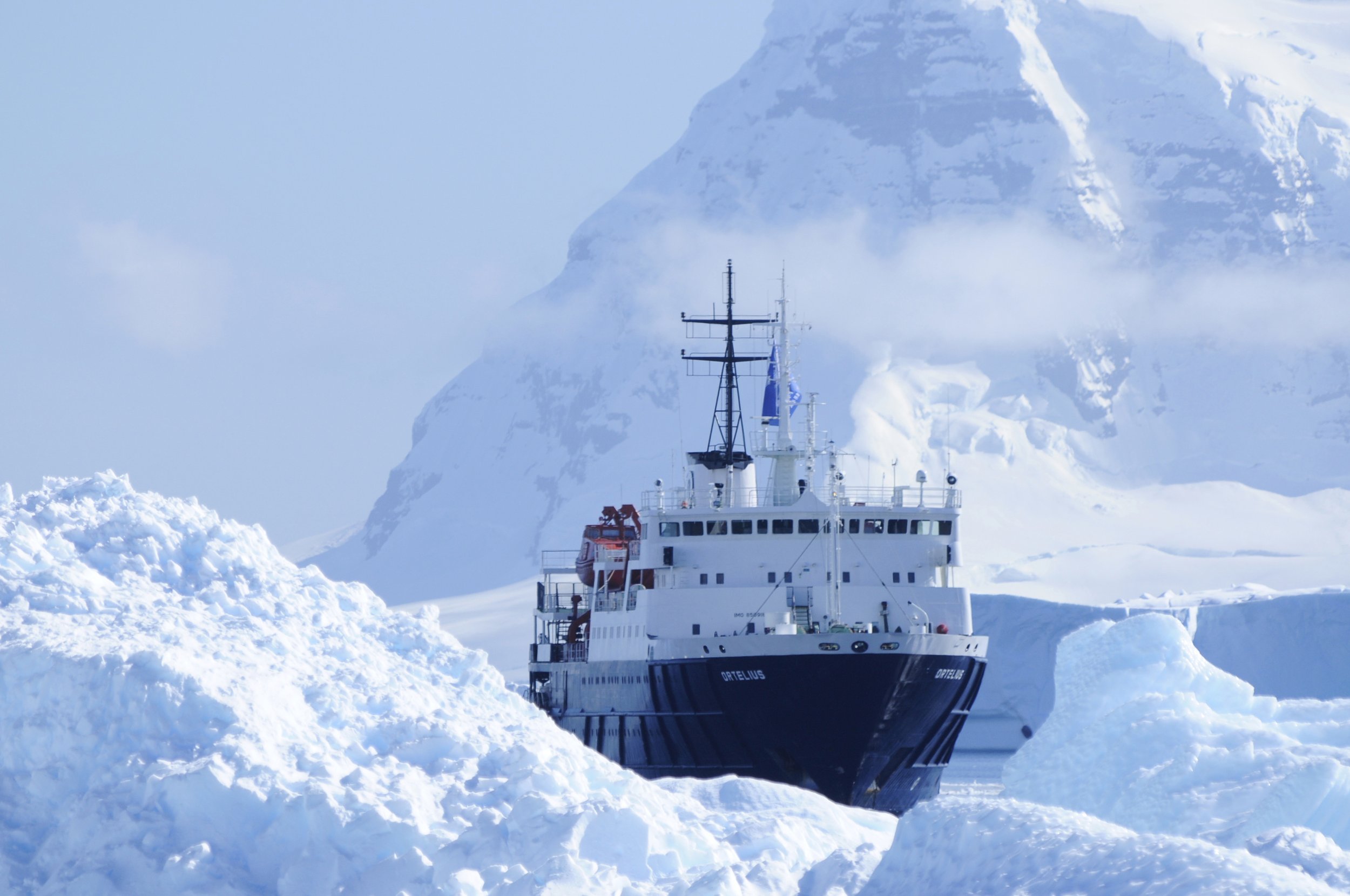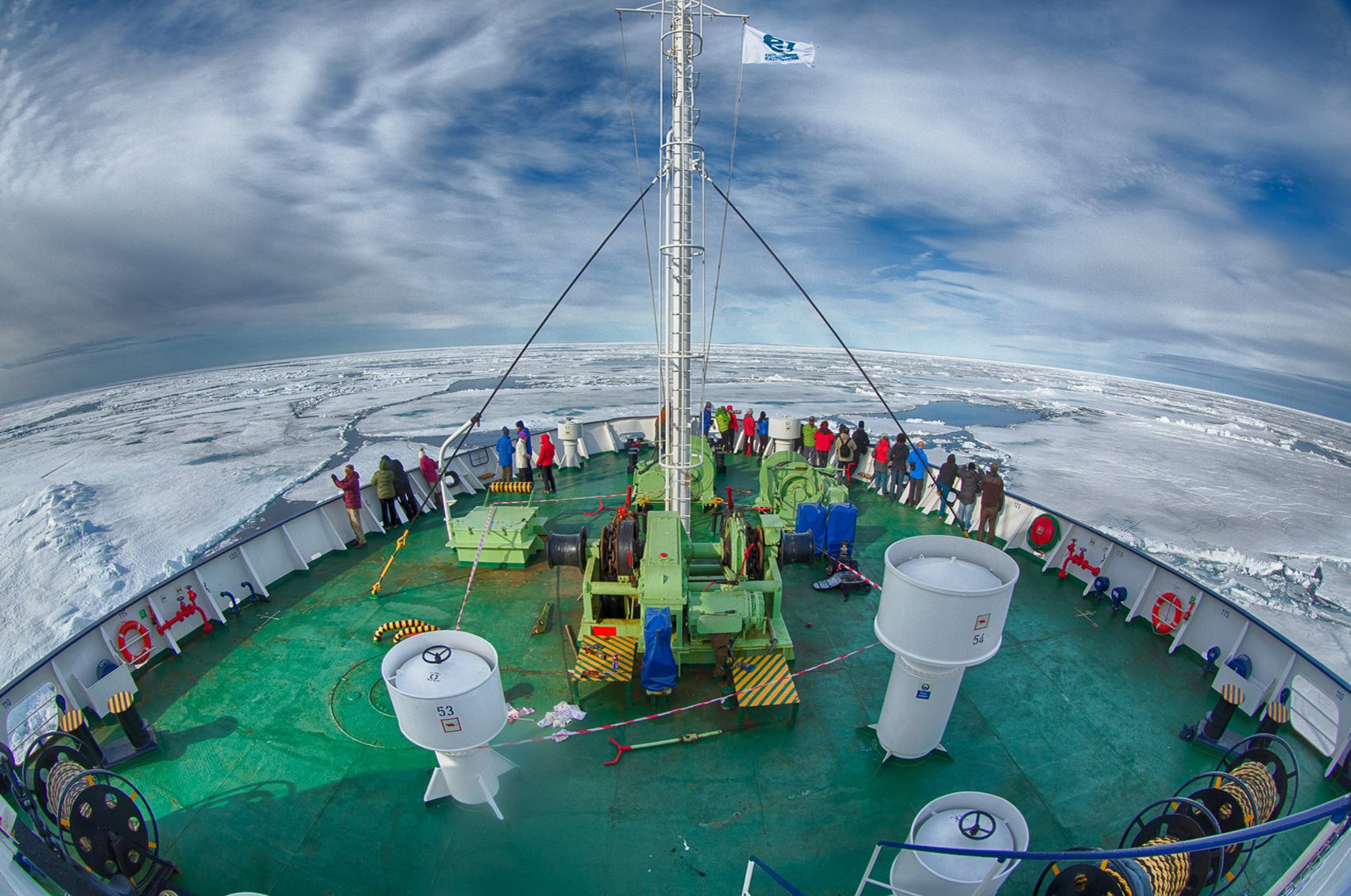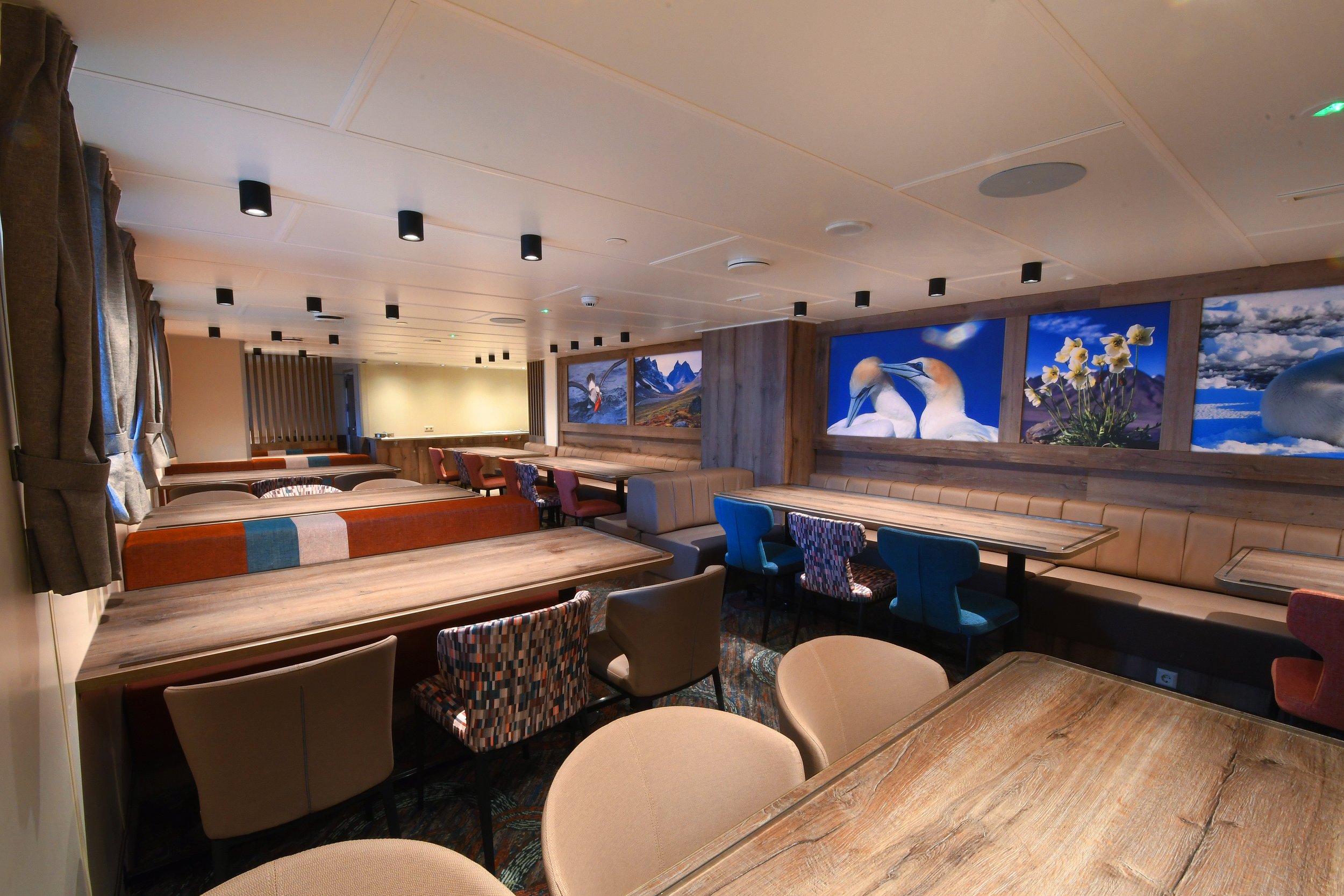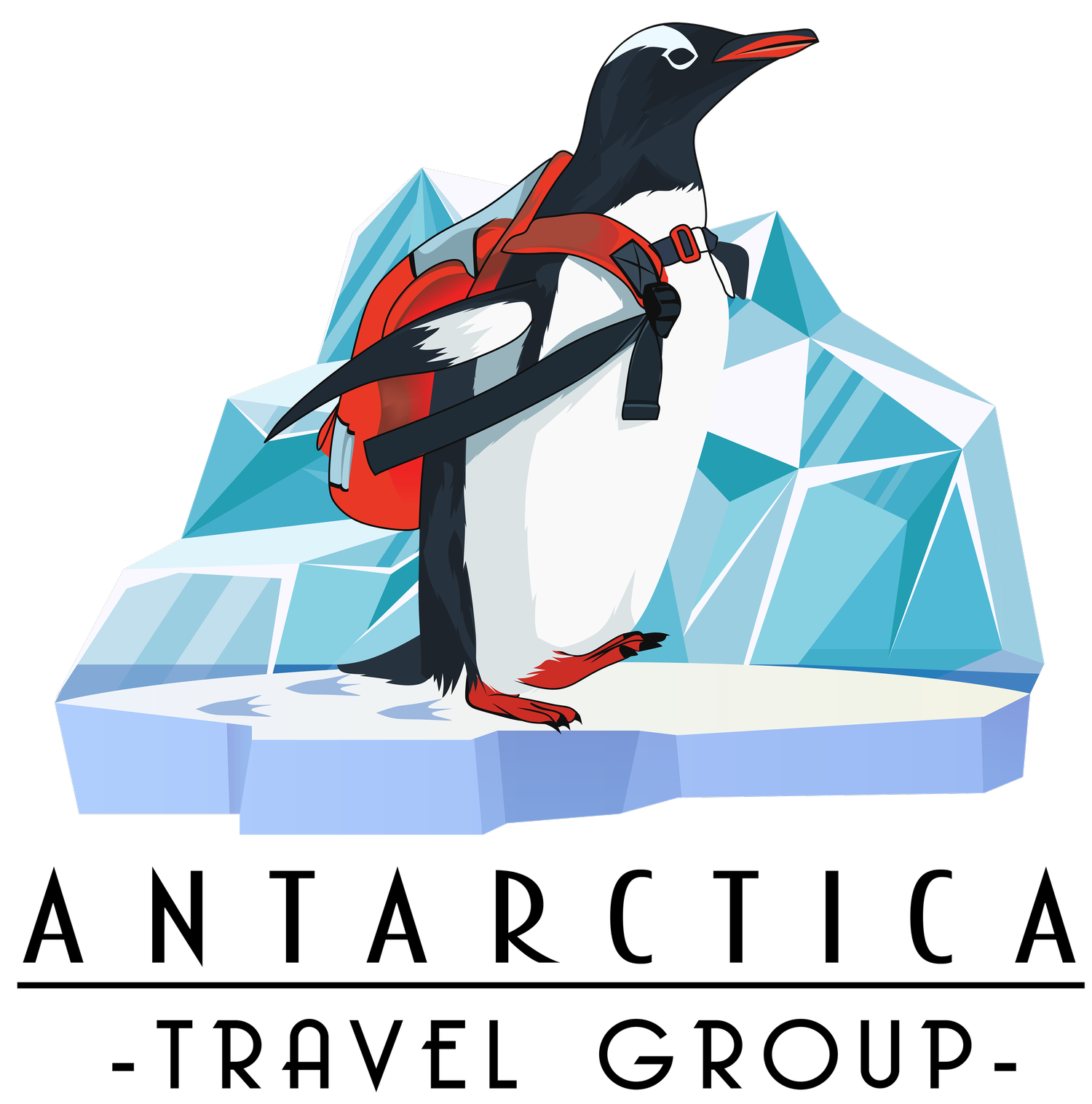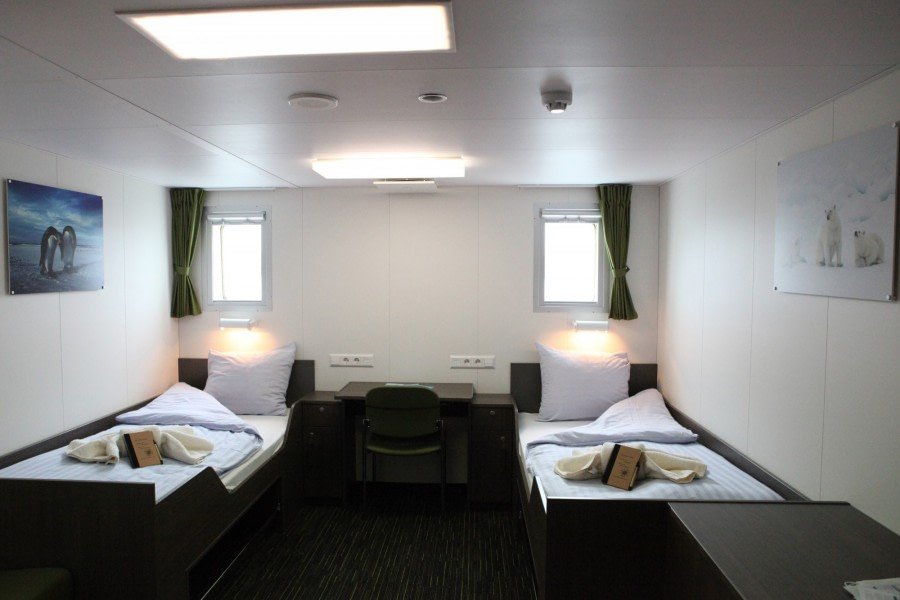
Antarctica - Beyond the Polar Circle - Wilkins Ice Shelf - Aurora Australis
Sixteen day Antarctica trip aboard the m/v Ortelius with Oceanwide Expeditions
Duration: 16 Days / 15 Nights
Itinerary: Antarctica - Beyond the Polar Circle - Wilkins Ice Shelf - Aurora Australis
Departing/Returning: Ushuaia/Ushuaia
Ship name: m/v Ortelius
Passengers: 108 *
Departures:
21 Mar - 5 Apr, 2025
Dates and Details.
Trip Description.
This voyage explores a number of historically significant Antarctic areas, such as the very rarely visited Bellingshausen Sea, Marguerite Bay, and Alexander Island. We focus on places discovered by Adrien De Gerlache on his Belgian Antarctic Expedition (1897 – 1899) and Jean-Baptiste Charcot on his French Antarctic Expedition (1904 – 07).
-
Beyond the Polar Circle: Wilkins Ice Shelf
This voyage is a true expedition, exploring the rarely visited region of the Bellingshausen Sea, Marguerite Bay, and Alexander Island. We explore many of the places discovered by Adrien de Gerlache on his Belgian Antarctic Expedition (1897 – 1899) aboard the Belgica. This voyage leaves Ushuaia and heads straight beyond Antarctic Circle, where we aim to spend the rest of the trip. The variety of landings and wilderness in this region are rivalled by few other places on Earth.
We will see Antarctic ice shelves, land on islands where few people have set foot, and enjoy this awe-inspiring area far from the beaten track of regular Antarctic cruises. We may also see a range of exotic wildlife, including humpback and minke whales, orcas, and a variety of seals: leopard, elephant, crabeater, Weddell, Antarctic fur, and maybe even a Ross seal. Gentoo and Adélie penguins, skuas, terns, and giant petrels are just some of the bird species we may see as well.
Astronomy & aurora australis: -
Spring 2025 marks the best chance to see the rare aurora australis, also known as the southern lights. Unlike the northern lights, the southern lights travel over no cities or villages and are only rarely seen from land. The sun’s 11-year cycle of activity peaks around 2025, making for more active auroras that are best seen around the equinoxes. We will maximize our chances of seeing the elusive and enchanting southern auroras by traveling below the Antarctic Circle when there is little moonlight in the sky. We will also have the chance to see many Southern Hemisphere stars and celestial objects, including the Southern Cross and Magellanic Clouds.
Dr. Tyler Nordgren will lead our night sky viewing activity on deck when the weather and auroras are favorable, speaking about the southern sky and its auroras. Nordgren is a professor of astronomy and physics at the University of Redlands as well as a former member of the Board for the International Dark Sky Association.
Dr. Julie Rathbun will continue this trip’s theme of polar and astronomical exploration, leading discussions about how Antarctica is used as a site to study Europa, one of Jupiter’s moons. A senior scientist with the Planetary Science Institute, she is part of NASA's Europa Clipper spacecraft mission, which launches in October 2024 to investigate the liquid ocean beneath Europa’s icy surface.
Day 1: End of the world, start of a journey
Your voyage begins where the world drops off. Ushuaia, Argentina, reputed to be the southernmost city on the planet, is located on the far southern tip of South America. Starting in the afternoon, you embark from this small resort town on Tierra del Fuego, nicknamed “The End of the World,” and sail the mountain-fringed Beagle Channel for the remainder of the evening.
Day 2 – 3: Path of the polar explorers
Over the next two days on the Drake Passage, you enjoy some of the same experiences encountered by the great polar explorers who first charted these regions: cool salt breezes, rolling seas, maybe even a fin whale spouting up sea spray. After passing the Antarctic Convergence – Antarctica’s natural boundary, formed when north-flowing cold waters collide with warmer sub-Antarctic seas – you are in the circum-Antarctic upwelling zone.
Not only does the marine life change, the avian life changes too. Wandering albatrosses, grey-headed albatrosses, black-browed albatrosses, light-mantled sooty albatrosses, cape pigeons, southern fulmars, Wilson’s storm petrels, blue petrels, and Antarctic petrels are a few of the birds you might see.
Day 4: Through the Pendleton Strait
You arrive at the Antarctic Peninsula near the Antarctic Circle in the afternoon. If sea ice allows it, you can then continue through Pendleton Strait and attempt a landing at the rarely visited southern tip of Renaud Island. Here you have the opportunity to see the first Adélie penguins of the trip as well as enjoy spectacular views of the icebergs in this surreal, snow-swept environment.
In the afternoon we sail to the Fish Islands and encounter one of the southernmost Adélie penguin and blue-eyed shag colonies in the Antarctic Peninsula.
Spending the night in the area of Crystal Sound the scenery will leave you staying up until the small hours, there is a chance to see Orca, Humpback and Minke Whale in this area.
Day 5: Detaille Island and The Gullet
Detaille Island – You may make a landing at an abandoned British research station here, taking in the island’s lofty position and imposing glaciers scenery.
We then sail through The Gullet, one of the most impressive narrow channels in Antarctic, with towering mountains either side, birds following the ship and playful penguins and seals frolicking in the water as we sail through this very special part of the journey. If ice conditions allow we will also carry out a landing or cruise in the afternoon.
Day 6: Porquoi Pas and Horseshoe Islands
Discovered and charted by the famous explorer Charcot, Pourquoi Pas offers a pleasant landing on a rocky beach against the backdrop of the mighty Moider Glacier. A gentle walk from the landing site provides an impressive view, while Antarctic furs seals relaxing behind the beach are a nice addition to the wildlife we’ve encountered on this voyage.
After lunch we head toward Horseshoe Island, named for its distinctive shape. An abandoned research station provides an insight into the early days of scientific research, and original artifacts show how different life was in those pioneering days. The hut is set among some of the most beautiful scenery in Antarctica, with views over the mountains and snow of Pourquoi Pas Island as well as Horseshoe Island’s mountain range. This is a photographic landing in many senses. Two old wooden boats even remain at the landing site as if waiting for their final launch.
Day 7 - 10: George IV and Wilkins Ice Shelf
Provided ice and weather conditions allow, you next head toward Antarctica’s ice shelves (the George IV and Wilkins). Here we hope to show you the scale of these vast cliffs and expanses of ice that will dwarf us and our ship. A range of Antarctic wildlife like humpback whales, fur seals, Adélie penguins, and maybe even one or more Ross’ seals may appear.
Day 11: Jenny and Leonie IslandsJenny Island will give another aspect to your Antarctic experience, offering raised beaches, hanging glaciers, and moss carpets. The island is also popular with wildlife: Terns, skuas, elephant seals, leopard seals, and Adélie penguins are all regular visitors.
A landing at Leonie Island will take your breath away. There is also the possibility to take a hike to the peak of the island, giving you a dramatic panorama of Marguerite Bay and Adelaide Island.
Day 12: Lagoon and Mikkelsen Islands
Lagoon island is the most northern island of the Leonie Islands group, also discovered and charted by Jean-Baptiste Charcot. This low laying island will provide a stark contrast to the previous days with its gently sloped beaches and flat areas to explore. The wildlife here will varies depending on snow cover. If there is little snow the ground is almost desert-like in appearance.
The Mikkelsen Islands offer a spectacular Zodiac cruise where we hope to encounter up to five Antarctic seal species. We may also see some beautiful birdlife, such as giant petrels and Adélie penguins.
Day 13 - 15: Familiar seas, familiar friends
Your return voyage is far from lonely. While crossing the Drake, you’re again greeted by the vast array of seabirds remembered from the passage south. But they seem a little more familiar to you now, and you to them.
Day 16: There and back again
Every adventure, no matter how grand, must eventually come to an end. It’s now time to disembark in Ushuaia, but with memories that will accompany you wherever your next adventure lies.
-
Photo Workshop
On select voyages, professional photographers will help you get the most out of your personal camera equipment
Detaille Island
Small and almost completely covered in snow, Detaille Island can only be visited on voyages that cross south of the Antarctic Circle
Horseshoe Island
An Antarctic island off western Graham Land, at the entrance to Square Bay
Adelie Penguin
These gallant-fighting, deep-diving namesakes of the French-claimed Antarctic Adélie Land are among the four penguin species on mainland Antarctica
Killer Whale
Technically a kind of dolphin, orcas were once thought to appear as whales in the summer and wolves in the winter
Black-browed Albatross
So efficient in the air that their in-flight heart rate barely rises above resting, these sub-Antarctic birds pack a stomach full of oil they can spit at would-be attackers
Light-mantled Albatross
Though these black-billed birds are so efficient at flying that they spend more energy at nest than in the air, they're often less than masterful at landing
-
INCLUSIONS
Voyage aboard the indicated vessel as indicated in the itinerary
All meals throughout the voyage aboard the ship including snacks, coffee and tea.
All shore excursions and activities throughout the voyage by Zodiac.
Program of lectures by noted naturalists and leadership by experienced expedition staff.
Free use of rubber boots and snowshoes.
Luggage transfer from pick-up point to the vessel on the day of embarkation, in Ushuaia.
Pre-scheduled group transfer from the vessel to the airport in Ushuaia (directly after disembarkation).
All miscellaneous service taxes and port charges throughout the programme.
Comprehensive pre-departure material.
EXCLUSIONS
Any airfare, whether on scheduled or charter flights.
Pre- and post- land arrangements.
Passport and visa expenses.
Government arrival and departure taxes.
Meals ashore.
Baggage, cancellation and personal insurance (which is strongly recommended).
Excess baggage charges and all items of a personal nature such as laundry, bar, beverage charges and telecommunication charges.
The customary gratuity at the end of the voyages for stewards and other service personnel aboard (guidelines will be provided)..
-
A deposit of 25% is required to hold your spot within 14 days of being invoiced and final payment is due 90 days before departure. Payment can be made via bank transfer or debit and credit card. Cards accepted are Visa or Mastercard.
Voyage Map.
Your Antarctic expedition begins in Ushuaia, Argentina, where you sail the Beagle Channel before crossing the Drake Passage and reaching the Antarctic Convergence. You explore the Antarctic Peninsula, passing through Pendleton Strait, visiting Renaud Island, Fish Islands, and staying overnight in Crystal Sound. Next, you visit Detaille Island and sail through the stunning Gullet passage. Continuing the journey, you land on Pourquoi Pas Island and explore Horseshoe Island. You then head toward the George VI and Wilkins Ice Shelves, followed by landings on Jenny and Leonie Islands. Afterward, you explore Lagoon Island and cruise around the Mikkelsen Islands, before crossing the Drake Passage again and disembarking in Ushuaia, where your adventure concludes.
Available Add-on Activites
-

Photo Workshop
One part of our photo workshop takes place on the vessel, the other takes place in the field. Participants with a special interest in photography will bring their personal photo equipment. The workshop must be pre-booked prior to departure.
-
Will we get off the ship?
Yes!!! Once we arrive in Antarctica it will be the ultimate goal of the Captain, Expedition Leader, and the Expedition Team to make sure we get off the ship as much as possible. You’ll participate in landings, zodiac cruises, and any additional activities you’ve signed up for. Check the “Detailed trip itinerary” below for more details on each outing.
-
Are there additional taxes and fees?
The price shown is the "all-in” price after all taxes, fees, port fees, and permits required; which are handled by the tour operator. The only main additional costs will be mandatory travel insurance, optional gratuity, canned beverages and alcohol, and additional activities. See the full list of inclusions/exclusions below.
-
Do I pay extra if I'm a solo traveler?
Not necessarily, no! Our group trips are usually made up of around 50% solo travelers! Prices are always per person, per bed. If you’re a solo traveler, we will match you with a same-gender roommate from our group to share your cabin with. There is also the option for solo cabin availability on certain trips. Please send us a message about solo cabins if that’s your preference.
Pricing
All prices are per person and include all taxes, fees, port fees, accommodation and meals.
Please refer to the full list of inclusions and exclusions for more details.
Upto 40% off on selected cabins
Quadruple Porthole
Featuring two portholes for scenic views, and two upper/lower berths for sleeping. A private shower and toilet, desk and chair, and flatscreen TV ensure your space is both functional and comfortable.
Modern amenities include a telephone and WiFi (supplemented), along with a hair dryer, safe deposit box, and ample storage space to accommodate your essentials, making your stay on board seamless and enjoyable.
$10,500
$6,300
Twin Porthole
Two portholes, two lower berths, and a private shower and toilet. It's furnished with a desk and chair, and equipped with a flatscreen TV, telephone, and supplemented WiFi. Additional amenities include a hair dryer, safe deposit box, and plenty of storage space, ensuring a comfortable and convenient stay.
$12,800
$7,700
Twin Window
Features two windows for ample natural light, two lower berths for restful sleep, and a private shower and toilet. It's furnished with a desk and chair, and includes a flatscreen TV, telephone, and supplemented WiFi for connectivity and entertainment. Additional amenities like a hair dryer, safe deposit box, and generous storage space ensure a comfortable and convenient stay.
$13,400
Triple Porthole
Two portholes, one upper/lower berth plus an additional single lower berth, ensuring restful sleep. It includes a private shower and toilet, desk and chair for personal space, and a flatscreen TV for entertainment. Stay connected with a telephone and supplemented WiFi. Additional amenities like a hair dryer, safe deposit box, and ample storage space make your stay convenient and organized.
Twin Deluxe
Features two lower berths for restful sleep, a private shower and toilet, and a desk and chair for workspace or dining. A small sofa provides a cozy seating area, while a refrigerator, coffee & tea maker, and flatscreen TV add home-like comforts. Stay connected with telephone and supplemented WiFi, and enjoy the convenience of a hair dryer, safe deposit box, and plenty of storage space for your belongings.
$14,300
Superior
Two windows, a double bed, and a single sofa bed, ensuring comfort for all occupants. It features a private shower and toilet, desk and chair, and a flatscreen TV for relaxation. Modern amenities include a telephone, supplemented WiFi, a refrigerator, and a coffee & tea maker. Additional conveniences are provided by a hair dryer, safe deposit box, and ample storage space, creating a well-equipped and comfortable environment.
Cabins may vary and may not be exactly as depicted. Please consult the deck plan and contact your booking agent for further information.
Ship Details.
The m/v Ortelius was built in Gdynia, Poland in 1989.
Ortelius was originally the Marina Svetaeva. Built in Gdynia, Poland in 1989, it served as a special-purpose vessel for the Russian Academy of Science. Later it was re-flagged and renamed after the Dutch/Flemish cartographer Abraham Ortelius (1527 – 1598), who in 1570 published the first modern world atlas: Theatrum Orbis Terrarum or Theater of the World. At that time his atlas was the most expensive book ever printed. Ortelius is classed by Lloyd’s Register in London and flies the Dutch flag.
The Ortelius carries 108 passengers in 50 cabins
